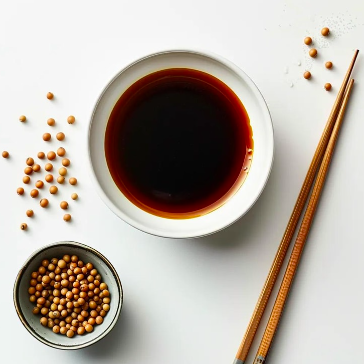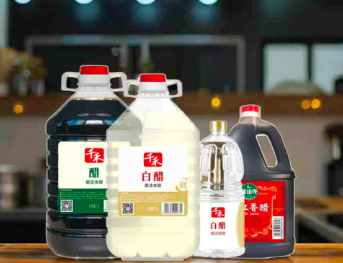目录
What’s thick copper PCB?
A thick copper PCB is a high-current PCB that contains 3 ounces or more of copper in the outer and inner layers of the board.
A thick copper circuit board is a layer of copper foil bonded to the outer layer of FR4. When the copper thickness is >20z, it is defined as a thick copper circuit board. Thick copper PCB is resistant to high temperatures and corrosion. It is mainly used in products with power storage, especially electronic products that need to run higher voltage and current. The thicker copper PCB is not the thicker the better. All data needs to be made according to customer requirements. Thick copper PCB has very good elongation performance and is not limited by processing temperature. It can be hot-melt welded by oxygen blowing at a high melting point and does not become brittle at low temperatures. It is also fireproof and belongs to non-combustible material. Thick copper PCB has different thicknesses and specific application occasions.
Introduction to Thick Copper Circuit Board Process Technology
A. Preparation before plating and electroplating treatment
The main purpose of thick copper plating is to ensure that there is a thick enough copper plating layer in the hole and to ensure that the resistance value is within the range required by the process. As a plug-in component, it is to fix the position and ensure the connection strength; as a surface-mounted device, some holes are only used as through holes to conduct electricity on both sides.
Inspection items
- Mainly check the quality of hole metallization, and ensure that there are no excess objects, burrs, black holes, holes, etc. in the hole;
- Check if it is dirt and other excess on the surface of the substrate;
- Check the No., drawing No., process documents & process description of the substrate;
- Find out the installation location, installation requirements, and the plating area that the plating tank can withstand;
- The plating area and process parameters must be clear to ensure the stability and feasibility of the electroplating process parameters;
- Clean and prepare the conductive parts, and first energize them to activate the solution;
- Determine whether the bath liquid composition is qualified and the surface area of the plate; if a fence-mounted spherical anode is used, the consumption must also be checked;
- Check the firmness of the contact parts and the voltage and current fluctuation range.
B. Control of the quality of thickened copper plating
- Accurately calculate the plating area and refer to the impact of the actual production process on the current, correctly determine the required current value, grasp the change of current in the electroplating process, and ensure the stability of electroplating process parameters;
- Before electroplating, first use the debugging board to test plating, so that the bath liquid is in an activated state;
- Determine the direction of the total current flow, and then determine the order of the hanging boards. In principle, it should be from far to near; ensuring the uniformity of current distribution on any surface;
- To ensure the uniformity of the coating in the hole and the consistency of the coating thickness, not only need to the stirring and filtering process measures, impulse current is also required;
- Frequently monitor the changes in current during the electroplating process to ensure the reliability and stability of the current value;
- Check whether the thickness of the copper plating layer of the hole meets the technical requirements.
Copper Plating Process
During the process of thickening copper plating, the process parameters must be monitored regularly, which often causes unnecessary losses due to different reasons. To do a good job in the thickening copper plating process, the following aspects must be achieved:
- According to the area value calculated by the computer, combined with the empirical constant accumulated in actual production, add a certain value;
- According to the calculated current value, to ensure the integrity of the coating in the hole, a certain value, namely the impact current, must be added to the original current value, and then returned to the original value in a short time;
- When the circuit board is electroplated for 5 minutes, take out the substrate and observe whether the copper layer on the surface and the inner wall of the hole is intact. It is best if all the holes have a metallic luster.
- A certain distance must be maintained between substrates;
- When the thick copper plating reaches the required electroplating time, a certain amount of current should be maintained during the removal of the substrate to ensure that the subsequent substrate surface and the hole will not become black or dark.
Precautions:
- It’s necessary to check the process documents carefully, read the requirements of the process, and be familiar with the substrate machining blueprint;
- Check whether there are scratches, indentations, exposed copper areas, etc. on the surface of the substrate ;
- Carry out trial processing according to the machining disk, conduct pre-inspection of the first piece, and then process all the workpieces if they meet the process requirements;
- And other tools used to monitor the geometric dimensions of the substrate ;
- Select appropriate milling tools (milling cutter) according to the raw material properties of the processed substrate.
Quality Control:
- Strictly implement the first piece inspection system to ensure that product dimensions meet design requirements;
- As per the raw materials of the circuit board, to select the milling process parameters;
- When fixing the position of the circuit board, clamp it carefully to avoid damaging the solder layer and solder mask layer on the surface of the circuit board;
- To ensure the consistency of the substrate dimensions, the position accuracy must be strictly controlled;
- When disassembling or assembling, pay special attention to the use of paper pads when stacking the substrate to avoid damaging the coating layer on the surface of the circuit board.






